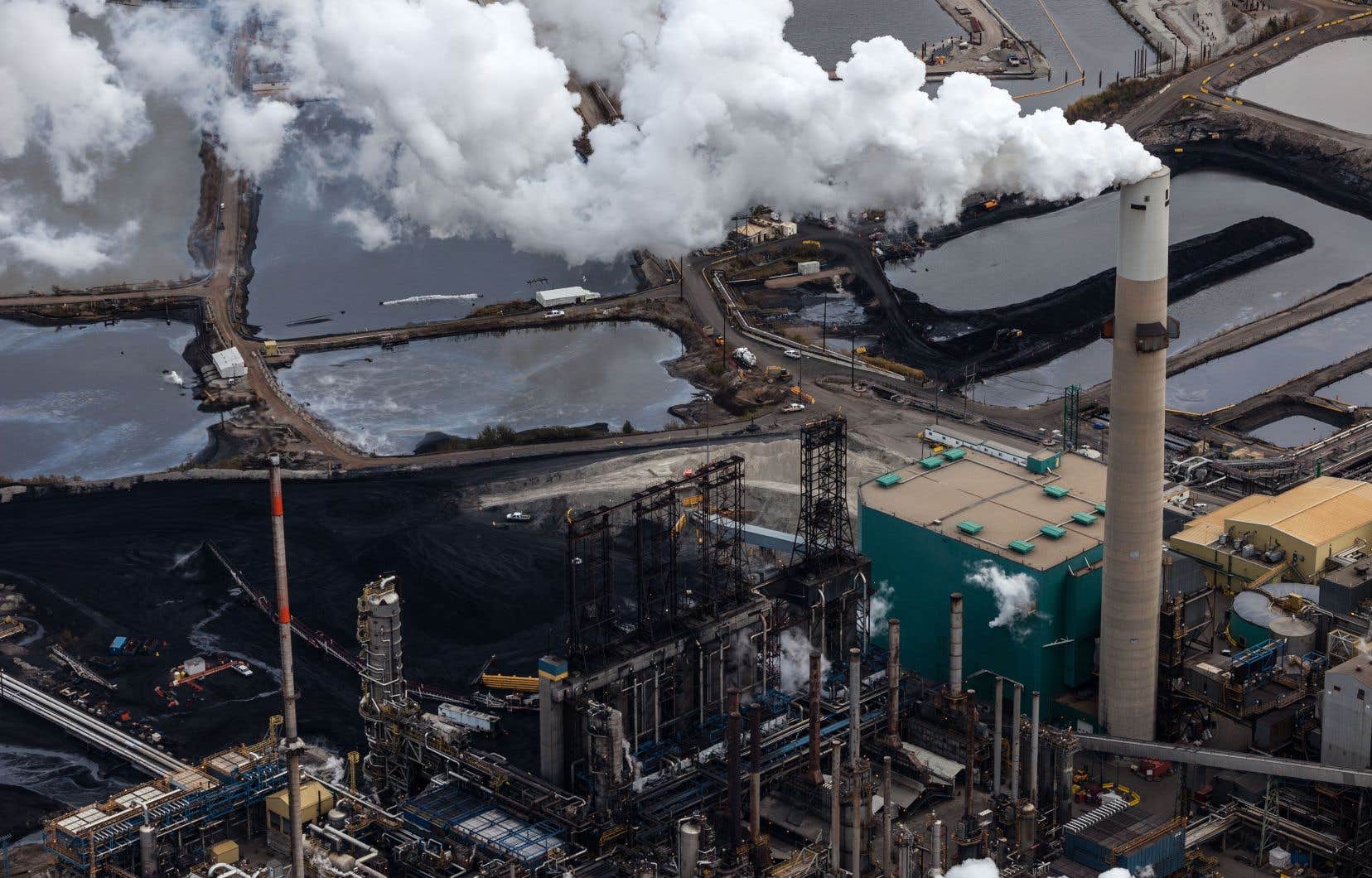Canada is still far from achieving its climate objectives for this decade. And more than ever, the balance sheet of greenhouse gas (GHG) emissions is weighed down by the growth of pollution generated by the oil and gas sector, the main emitter in the country.
According to an “estimate” of GHGs for the year 2022 produced by the Climate Institute of Canada, the country’s emissions continued to increase last year, following the rebound that followed the COVID-19 pandemic.
They would thus have reached 685 million tonnes (Mt), an increase of 14.2 Mt compared to 2021, we can read in the documents published Thursday, but transmitted to the Duty under embargo. This data, which is not as complete as the federal government’s official report, is published approximately seven months before it.
Figures from the research body show that the oil and gas sector is still the heavyweight in the national balance sheet. It alone represents 72% of the increase in emissions observed between 2021 and 2022. This fossil fuel industry, which wishes to increase its production over the coming years, would have emitted 194 Mt in 2022, compared to 189 Mt in 2021 The increase is equivalent to adding two million gasoline cars to the roads.
Outside of fossil fuels, another trend
Data compiled by the Climate Institute of Canada also indicates that most economic sectors have succeeded in reducing their emissions since 2005, which serves as the reference year for the federal government for establishing GHG reduction targets.
The electricity generation sector saw a decline of 55%, that of heavy industry fell by 15%, and that of transport, by 2%. Meanwhile, the building sector increased its emissions by 8.8% over the same period.
The oil and gas sector, however, experienced the most significant increase, with a jump of 15.5%, or 26.7 Mt. And “the long-term trend” remains on a growth trajectory, underlines Julien Bourque, political analyst principal at the Climate Institute of Canada. This situation is largely explained by a marked increase in oil sands production. The industry, which reaped record profits in 2022, also plans to make billions of dollars in investments this year to increase production.
In short, the fossil fuel industry currently represents an obstacle to achieving Canada’s climate objectives for this decade.
According to the Trudeau government, the objective is to reduce emissions by 40% to 45% by 2030 compared to the 2005 level. However, at present, the decline would reach only 6.4%. Consequently, according to the research organization, national emissions will have to decline each year by 5.4% if we hope to meet the 2030 target.
Emissions cap
In this context, the Climate Institute of Canada estimates that imposing an emissions cap on the oil and gas industry, then reducing them, could help reduce GHG emissions in the country. The Trudeau government has promised to present its draft regulations this year, and it should be adopted by fall 2024.
In a letter published Wednesday in The Press, the former federal Minister of Environment and Climate Change, Catherine McKenna, goes in the same direction. “After years of pious announcements and good-natured corporate publicity, it is magical thinking to believe that the oil and gas industry cares about anything other than its own profits. That’s why it’s time to do what the majority of Canadians — including those in Alberta — believe is necessary, which is to impose a strict cap on emissions from the Canadian energy industry. oil and gas,” she writes.
In a report released on Tuesday, the International Energy Agency (IEA) stressed that new oil and gas projects must not be approved if the international community wants to meet the most ambitious goal of the Paris Agreement, or limit global warming to 1.5°C.
According to the IEA, rich countries like Canada must also improve their targets for reducing greenhouse gas emissions in order to achieve carbon neutrality in 2045, and not in 2050, as provided for in the federal commitment.
According to the most recent official data, in 2021 Canada was the tenth largest emitter of GHGs in the world, and its emissions per capita represented 17.5 tonnes. For comparison, it is estimated that to limit global warming to 1.5°C, and thus respect the most ambitious objective of the Paris Agreement, average global emissions should not exceed two tonnes per year. person.
